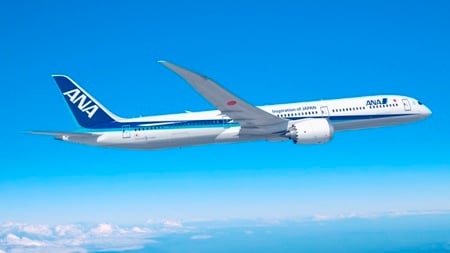
Source: The Boeing Co.
The current list price on a 787-10 is $297.5 million, compared with $257.1 million for the 787-9 and $218.3 million for the 787-8. Even at this nosebleed level, the 787-10 will cost about $90 million less than the 777-9X when that plane makes its debut in service, now expected in 2020.
One of the most far-reaching changes Boeing made in its design of the 787 was to replace many of the plane’s mechanical subsystems with electronics. This change added to the number and size of batteries that are required on the planes and to the complexity of the software that keeps the planes in the air.
Last week the Federal Aviation Administration (FAA) revealed a software bug it had discovered in testing that could cause a 787 to lose all of its electrical power while in flight, putting the aircraft into serious danger. The FAA issued an order called an airworthiness directive to airlines on Thursday mandating periodic power systems shutdowns to avoid the problem.
ALSO READ: Airbus Accuses U.S. and Germany of Spying
If the 787’s electrical power systems are not completely shut down at least once every 248 days, the systems could shut down entirely while the plane is in flight. Boeing has said that during routine maintenance power systems are normally shut down completely, and it has recommended to its 787 customers that they shut down the power systems completely at least once every four months. The company expects to have a software fix by the end of this year.
The 787’s body is 50% composites and 20% aluminum, almost a full reversal of the make-up of the 777, which is 12% composites and 50% aluminum. The lower weight of the composites is a main contributor to the 787’s fuel efficiency. Boeing claims the airplane is 25% more fuel efficient than similarly sized airplanes and emits 20% less pollutants. Replacing some mechanical systems with electronics also saved weight.
It took nearly eight years for Boeing to get the first 787-8 Dreamliner off the drawing board and into service with the world’s airlines, at a total development and manufacturing cost estimated at $32 billion. That is about twice as long as the company’s initial estimate and more than five times more expensive.
Boeing launched the 787-10 in June of 2013 at the Paris Air Show and said at the time that it had 102 commitments for the new model. As of the end of March, Boeing has taken orders for 1,105 of all 787 models and 142 orders for the 787-10. Singapore Airlines placed an order for 30 of the planes on the launch date, and United ordered another 10 on the launch date to go with the first 17 it ordered in 2010. Other customers for the 787-10 include Air Lease Corp. (NYSE: AL) and General Electric Co.’s (NYSE: GE) Capital Aviation Services. The United Arab Emirates Etihad Airways ordered 30 in November 2013, and British Airways ordered 12 in December 2013. An order for three of the planes came from Japan’s All Nippon Airways (ANA) in March after no orders for the plane were placed at all in 2014.
ALSO READ: Did Boeing Outsmart Airbus on Super-Jumbo Planes?
Sponsored: Attention Savvy Investors: Speak to 3 Financial Experts – FREE
Ever wanted an extra set of eyes on an investment you’re considering? Now you can speak with up to 3 financial experts in your area for FREE. By simply
clicking here you can begin to match with financial professionals who can help guide you through the financial decisions you’re making. And the best part? The first conversation with them is free.
Click here to match with up to 3 financial pros who would be excited to help you make financial decisions.
Thank you for reading! Have some feedback for us?
Contact the 24/7 Wall St. editorial team.
